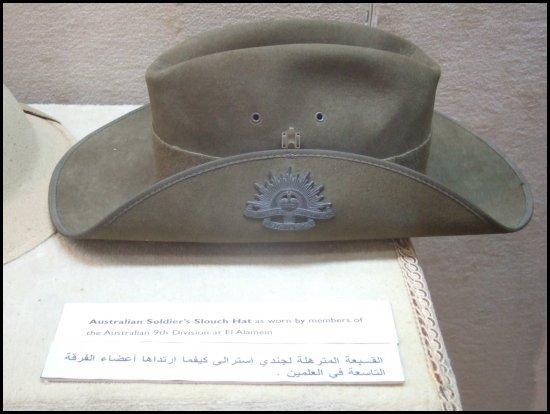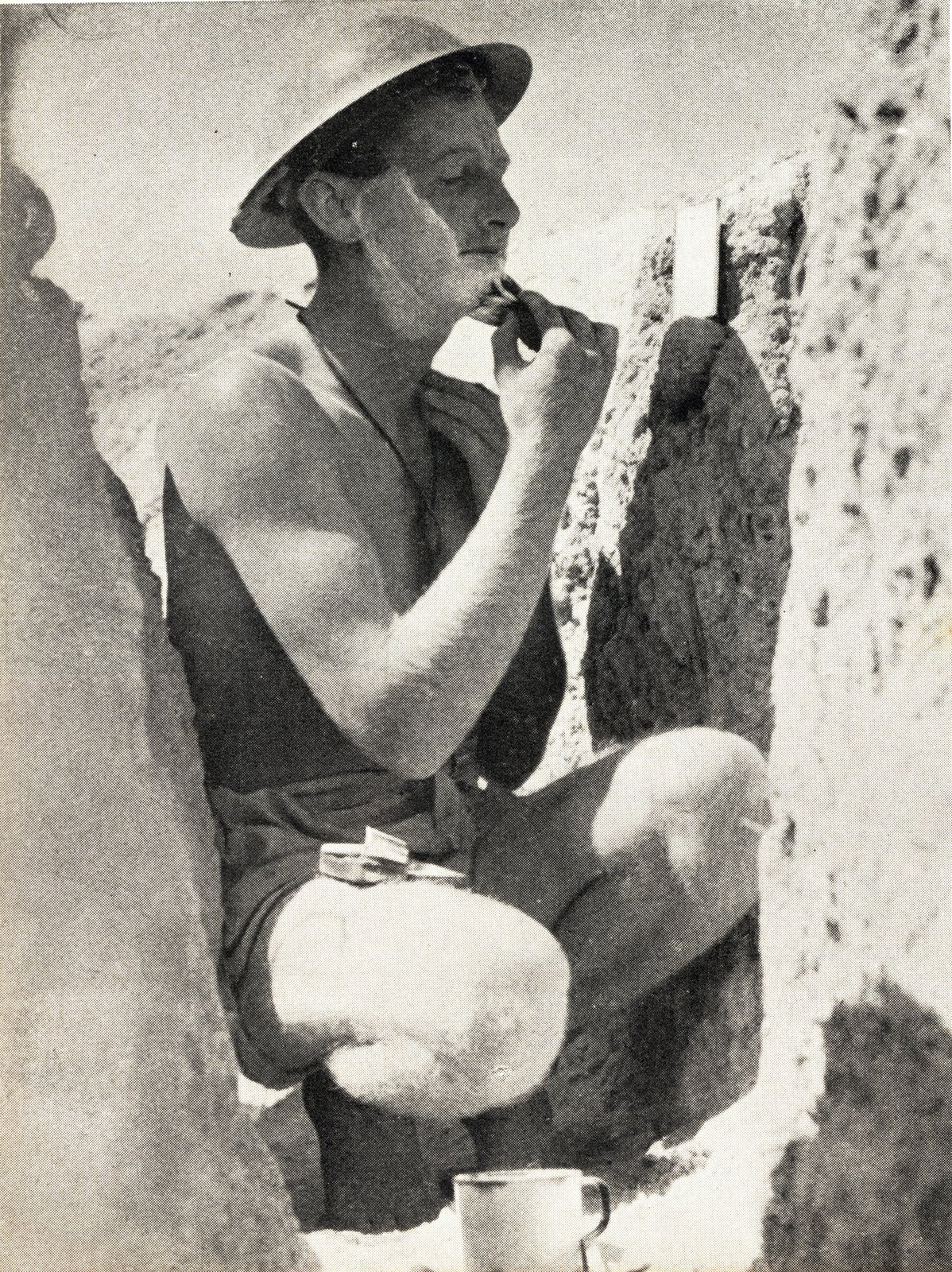Saturday, September 6, 2008
[Image] A Rat in a Hole Vol 2.
[Image] Rare reprieve for 2/23rd Captain.
[Image] Wounded 2/23rd patrol returns
Monday, September 1, 2008
[Image] Tommy got you covered
VX31704 Cpl. Warwick Brownrigg & his Thompson.
VX31704 Cpl. W. Brownrigg aims his American made Thompson sub machine gun out a firing slot in the sandbag defences of his position in the Red Line of Tobruk's outer perimeter.
Cpl. Brownrigg, of the 2/23rd Infantry Battalion out of Victoria, featured in a number of photos taken at the time by members of the Military History and Information Unit. In this one he has a rare Tommy Gun with a larger 50 round drum magazine inserted. It also has the fore grip fitted, which with the added weight of the larger magazine made it a necessity for semi-accurate firing.
Cpl. Brownrigg is listed as having been discharged from the Army on 22nd October, 1942. As his service record has not been digitised by the National Archives I am unable to say for certain why. I suspect that his discharge date being so close to the date of the Second Battle of El Alamein that he may have been so severely wounded that he was not expected to be able to return to service and thus discharged. At this stage this is nothing more than an educated guess.
image 020503 Australian War Memorial.
Sunday, August 24, 2008
[Image] The P.M. and the Private.
SX13319 Pvt. Stanley Collins
2/23rd Infantry Battalion.
When touring the front lines Mr Churchill stopped to speak with Pvt. Collins of Adelaide. What happened next ensured that Pvt. Collins was the most famous man in the 9th Division for a day. He bummed a cigar off the Prime Minister of England.

When later asked by curious mates if he intended to smoke it, Pvt. Collins joked that he was going to take it home have it sealed in glass and would then pass it down as a family heirloom. Pvt. Collins survived the war, discharging in September, 1946 as Staff Sergeant Collins. It is not currently known if he did indeed take the cigar home with him in early 1943.
images 024760, 013354 & 013355 Australian War Memorial.
Tuesday, August 5, 2008
[Image] "...a brave, dashing and resourceful soldier." - Morshead.

- "Failing to appear at a place of parade appointed by a commanding officer" for which he was fined 10 shillings and 7 days pay.
- "Conduct prejudicial to a Commanding Officer's Military Discipline" for which this offence cost him a fine of 20 shillings.
In spite of his reported disciplinary issues Pvt. O'Connell showed all of his commanding officers that they were wrong about him and proved himself a soldier when it mattered most, when with his mates and under fire.
It was whilst Pvt. O'Connell MM was with his mates and under fire at Tel el Eisa on the night of 22nd July, 1942 that he was killed in action. He is buried at the El Alamein War Cemetery. He is memorialised on the Roll of Honour here;
http://www.awm.gov.au/roh/person.asp?p=147-17814
At the time of his death, like too many of the men killed at Alamein, Pvt. Morris Joseph O'Connell was 23 years old.
image 022764 Australian War Memorial
Pvt. O'Connell's entire digitised service record can be viewed at the National Archives Website. See the link in the sidebar on the right under "Research Links".
Friday, August 1, 2008
[Image] Sgt. Jones' improvised banjo

Sunday, July 27, 2008
[Image] 2/23rd Bren Gunner at Tobruk
image 020558 Australian War Memorial.














